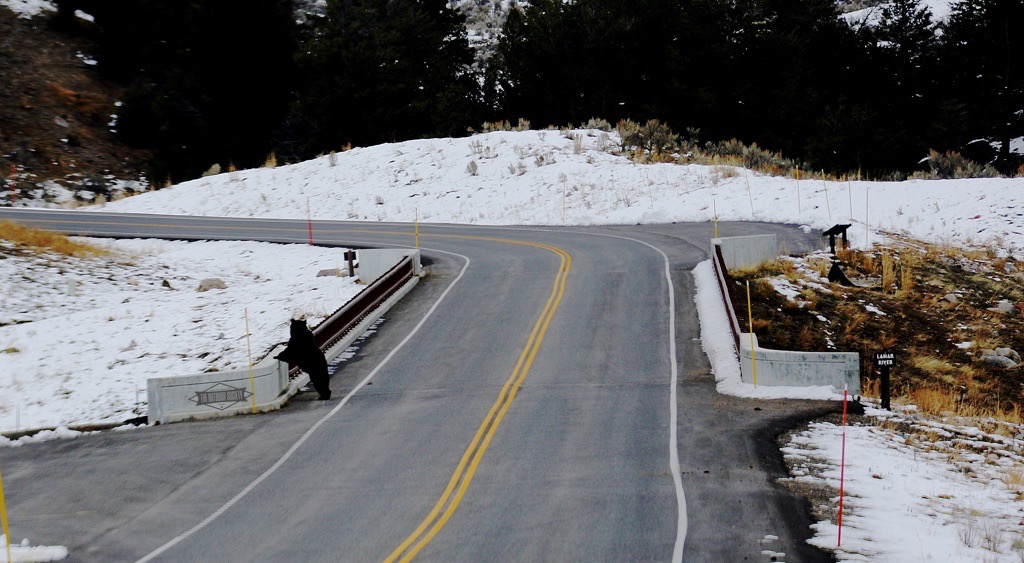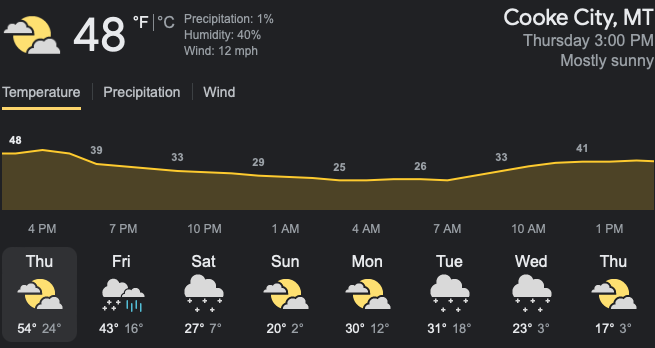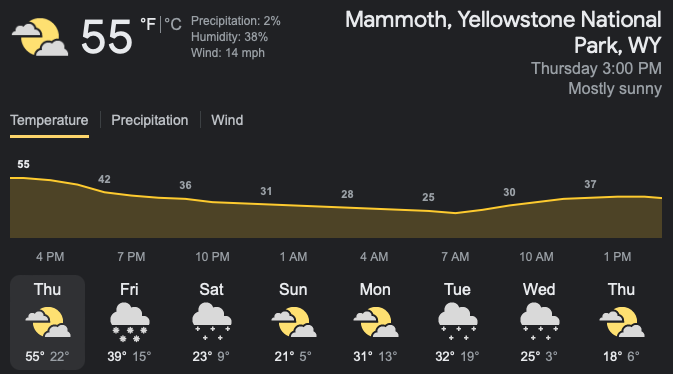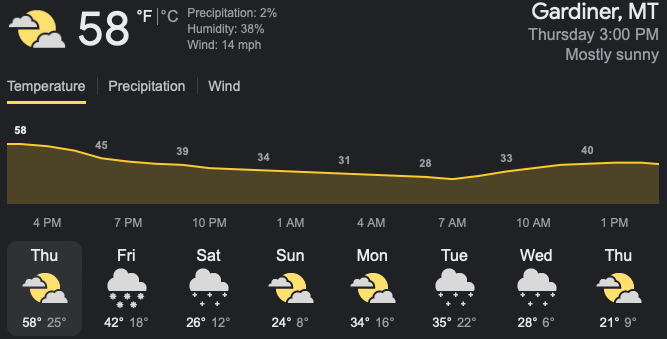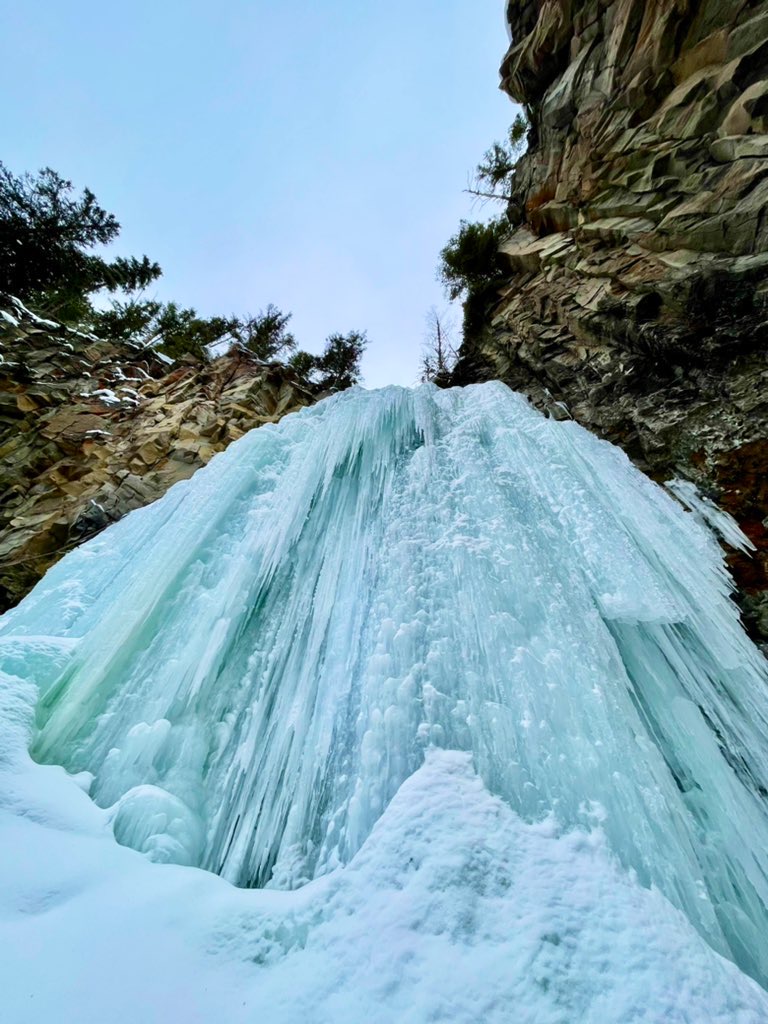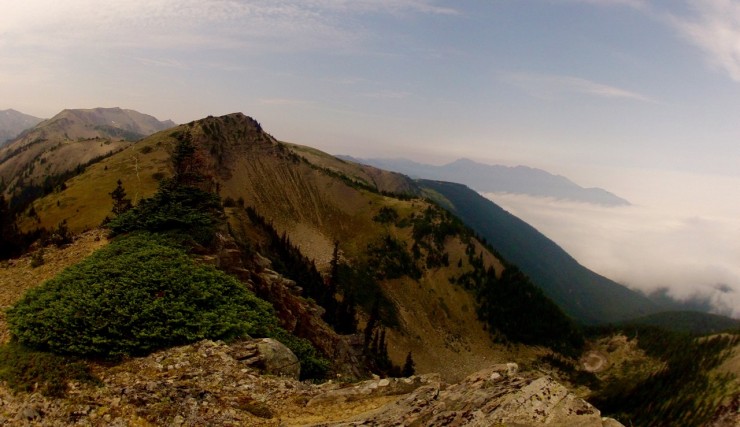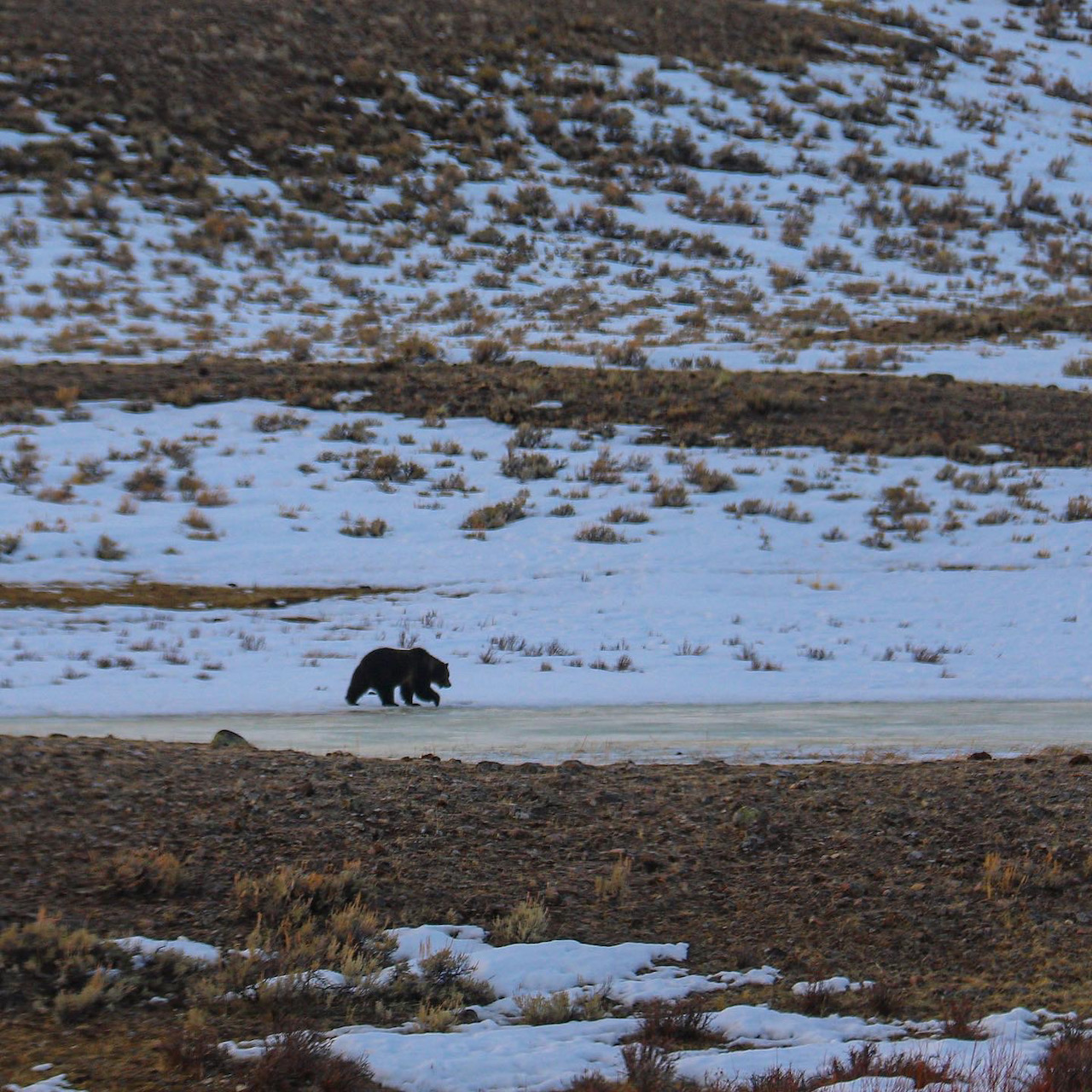This Week in Yellowstone, I tell you how to maneuver in a bison jam, look at the upcoming road construction and provide an update on when you should start to see grizzly bears in the park. The snowpack isn’t great but some snow should fall this week, making it yet another perfect time to take an adventure in Yellowstone.
If you enjoy this or know someone who will, please share this and get ready to visit America’s first National Park. If you want to support my weekly park posts, please pick up a guidebook!
BIGGEST NEWS OF THE WEEK
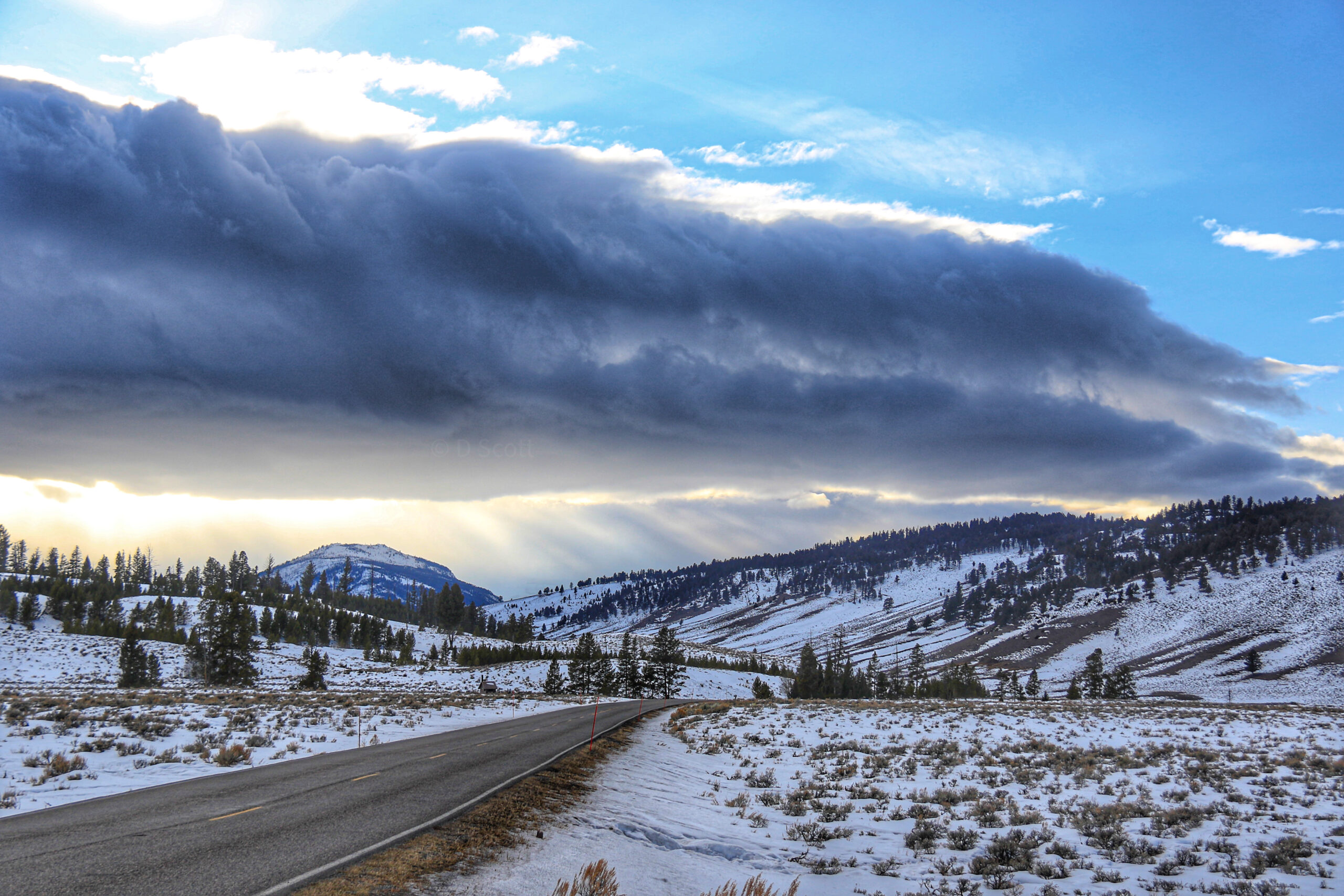 Yellowstone Announces Upcoming Road Projects for 2022
Yellowstone Announces Upcoming Road Projects for 2022
It seems like there isn’t a year in Yellowstone without somewhere getting much needed infrastructure updates and 2022 is no different. While the road connecting Canyon to Tower will finally be open this summer, there are a handful of other projects that will be starting soon. Plan ahead for these projects, as they will seriously impact your travel plans later in the year. They won’t bother you this week, though!
There will be three major road construction projects in 2022. Those projects are the Lewis River Bridge, the stretch between Old Faithful to West Thumb, and building a new Yellowstone River Bridge near Roosevelt. All three projects will cause major delays. Two of these projects, the Lewis River Bridge and the road between Old Faithful to West Thumb will have overnight closures for certain periods of time. These projects are funded through the Great American Outdoors Act and Legacy Restoration Fund.
The Lewis River Bridge Project will start in the spring 2022 and won’t be completed until fall 2023. This will dramatically impact travel to and from the park’s south entrance. During this time, expect construction and delays up to 20 minutes in the Lewis River Bridge area while this road is open to wheeled vehicles (May – Nov. 1). Keep in mind that there will be occasional overnight closures between 7 p.m. to 9 a.m. in spring and fall. Nearby pullouts and the trail to Lewis River Falls will be closed during construction. This project includes the removal and replacement of the structurally deficient Lewis River Bridge. The existing 273-foot-long bridge, built in 1960, will be removed, and a new bridge will be constructed immediately downstream to preserve safe visitor access between South Entrance and West Thumb. Parking areas, overlooks, and walkways in this area will be updated and reconfigured to reduce traffic hazards and improve accessibility for visitors.
The Old Faithful to West Thumb project will begin spring 2022 until fall 2023, expect construction and delays up to 30 minutes on the Grand Loop Road between Old Faithful and West Thumb while this road is open to wheeled vehicles (May – Nov. 1). Overnight closures will occur on this section of road from 8 p.m. to 6 a.m. beginning Sept. 5 until roads close for the season. This project includes the rehabilitation of 22 miles of the Grand Loop Road between Old Faithful and West Thumb, one of the most heavily traveled road corridors in the park. Construction will include repaving the full 30-foot-wide roadway segment, which was last repaved in 1987 and has deteriorated due to heavy usage and winter weather conditions. Additionally, guardrails, culverts, and other drainage structures will be replaced to enhance visitor safety.
The final scheduled project occurring this year is the Yellowstone River Bridge. This project is anticipated to begin fall 2022 and not be completed until fall 2025. During this time, expect construction and delays up to 30 minutes in the Yellowstone River Bridge area year-round. Sadly, the Yellowstone River Picnic Area and Wrecker Curve access road and parking area will be closed during construction. Hiking trails in the area will remain open. This project includes the replacement of the structurally deficient Yellowstone River Bridge. A new bridge upstream will replace the existing 604-foot-long bridge, built in 1963, to preserve year-round access to/from the Northeast Entrance and communities of Silver Gate and Cooke City, Montana. New pullouts and paved parking areas will increase access to trails, fishing, and viewpoints. Yellowstone River Picnic Area will be enlarged to accommodate increased visitor use.
Also be aware that like every year, chip sealing will take place on Yellowstone’s roads. Check the park’s live road map to see where chip sealing is scheduled to occur and plan for delays of up to 30 minutes. Dates can change due to weather. Drive slowly and maintain the recommended speed limit on chip seal pavement to reduce the risk of loose gravel damaging cars or windshields.
OTHER NEWS
Get Ready to Start Seeing Grizzly Bears!
As I teased in the wildlife section of last week’s post, bears are starting to be active in and around Yellowstone. Those who have been visiting the park will know this, as a sow and cubs have occasionally emerged from their den this winter near the Petrified Tree area of the park. While black bear sightings here are sure to create crowds and bear sightings, this announcement is about the park’s grizzly bears.
Male grizzlies come out of hibernation in mid-to-late March. Females with cubs emerge in April and early May. When bears emerge from hibernation, they look for food and often feed on elk and bison that died over the winter. Sometimes, bears will react aggressively while feeding on carcasses
Each day that passes means that the likelihood of seeing a grizzly will increase. On Saturday, March 13, 2021, a pilot supporting park wildlife studies saw the first grizzly bear of 2021.The first grizzly sighting sighting of 2020 was on March 7th. On that day, the bear was observed from the air by biologists during a radio telemetry flight near Grand Prismatic Spring just one day before last year’s first sighting. In 2019 was on March 8th. In 2018, it was on March 6th. In 2017, the first grizzly was spotted on March 15th. In 2016, the first grizzly sighting was on February 23rd, while 2015 saw the first grizzly on February 9th. With the bears waking up and roaming, hikers need to be aware, as active bears earlier in the year increase the potential for unexpected bear encounters.
Because of the number of active bears in Yellowstone, the park restricts certain visitor activities in locations where there is a high density of elk and bison carcasses and lots of bears. Restrictions began in some bear management areas on March 10 and will last for months. A map of the closed areas can be found here.
Last year, a grizzly was spotted during the second week of March at the Blacktail Ponds, a few miles east of Mammoth. Chances are, a grizzly will be spotted there soon. Also, keep an eye out for the black bear with cubs near the Petrified Tree pullout. In warm weather, the sow and cubs have been walking around and leaving the den.
I also want to use this news to remind everyone to have bear spray with them when on any trail in Yellowstone. Bear incidents are extremely rare in the park, and we would like to keep it that way. Carry bear spray and most importantly, know how to use it.
Interior Roads to Close to Oversnow Travel Starting March 6th
This news will impact very few of you, as private snowcoach vehicles are rarely allowed into the park interior. However, it is important to know.
The park website states that: Roads will close to oversnow travel by snowmobile and snowcoach at 9 pm on the following dates:
March 6: Mammoth Hot Springs to Norris
March 8: Norris to Madison and Norris to Canyon Village
March 13: Canyon Village to Fishing Bridge
March 15: All remaining groomed roads close
The 2022 Spring opening dates for interior park roads are as follows. Don’t worry, I will be posting about this every week it is relevant.
April 15: West Entrance to Madison Junction, Mammoth Hot Springs to Old Faithful, Norris to Canyon Village
May 6: East Entrance to Lake Village (Sylvan Pass), Canyon Village to Lake Village
May 11: Cooke City to Chief Joseph Scenic Byway
May 13: South Entrance to West Thumb, Lake Village to West Thumb, West Thumb to Old Faithful (Craig Pass), Tower Junction to Tower Fall
May 27: Tower Fall to Canyon Junction (Dunraven Pass), Beartooth Highway
SNOWPACK UPDATE
The snowpack isn’t great, but March seems to always deliver a few good storms to help out before the real thaw begins. This week in no exception. Snowpack currently is sitting in the mid to low 80% of normal levels and will either remain there or increase a bit after this coming week. A huge snowstorm isn’t coming, but every inch helps. Sadly, it looks as if the snowpack and runoff will continue to be lower come spring and summer, potentially leading to some more serious issues in the coming months.
Here is the current snowpack map: 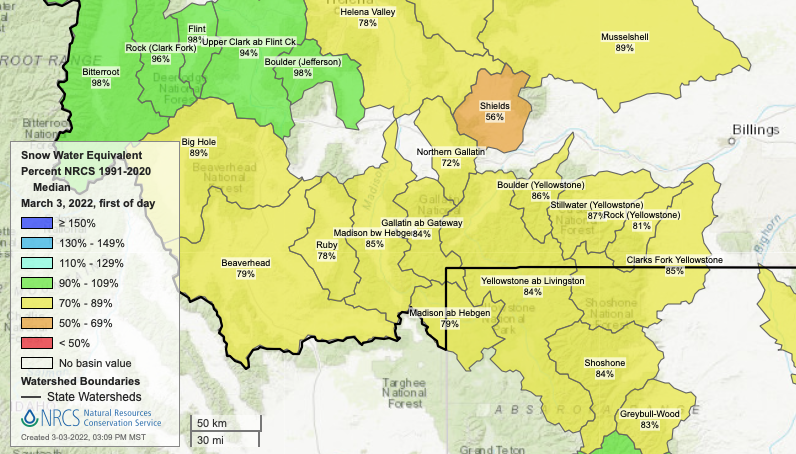
WEATHER FOR THE COMING WEEK
Despite the warm weather that swept over the region last week, the coming week’s weather reminds us that we are still in winter. Expect snow through the region on Friday and Saturday morning, as well as mid-week. Temperatures will be down into the single digits at night and in the 20s and 30s during the day.
This is the weather.com forecast for the three closest areas that are currently drivable in the park- Gardiner, Mammoth Hot Springs and Cooke City. While they don’t specifically cover the entire region, these forecasts give a great idea of what to expect all around the region. As always, weather can and does change fast in the park, so always be prepared for anything.
ROADS AND CAMPGROUNDS
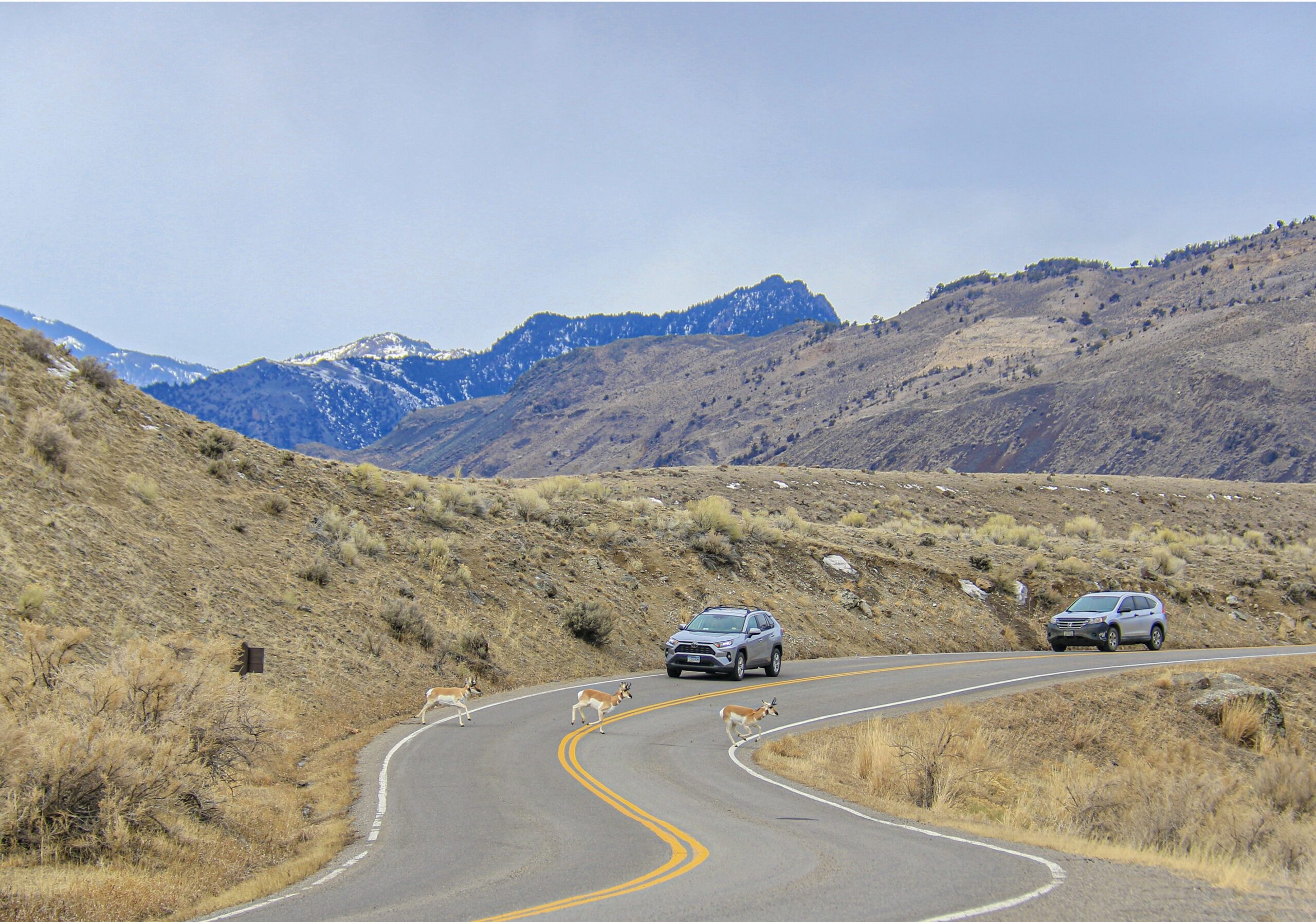 The snow this weekend and midweek will make the roads a bit slick. The warm weather last week helped melt out most areas, but be aware that corners and areas that receive minimal daylight will be snowy or icy and maybe both. Drive slow and safe and don’t let those trucks pulling snowmobiles push you off the road. Use the pullouts, pay attention to the road and know your limits.
The snow this weekend and midweek will make the roads a bit slick. The warm weather last week helped melt out most areas, but be aware that corners and areas that receive minimal daylight will be snowy or icy and maybe both. Drive slow and safe and don’t let those trucks pulling snowmobiles push you off the road. Use the pullouts, pay attention to the road and know your limits.
For up-to-date information call (307) 344-2117 for recorded information, or sign up to receive Yellowstone road alerts on your mobile phone by texting “82190” to 888-777 (an automatic text reply will confirm receipt and provide instructions). Anticipate possible road closures due to inclement weather and dangerous driving conditions.
Planning on camping in the park this week?
Mammoth is still open and not very frequented at all. What a shock. Looks like not very many people are enthused about winter camping. I do expect this to start to change soon, though. In a few weeks, the migratory birds will start to return, as well campers. It won’t happen this week, though.
WILDLIFE WATCH
As I mentioned up above, the highlight for many this week may be seeing the first grizzly of the year. I hope that it happens for you if you are visiting the park this week. Chances are, the first grizzly will be near the Blacktail Ponds area, just east of the Lava Creek Picnic Area. Those hoping to see bears should also peek in at the black bear den visible from the parking area below the turn to the Petrified Tree. About once a week, the bears will be active and visible in the opening of the den, occasionally leaving the confines of the cave for a few minutes. You will see cars parked and people outside with scopes and cameras. Many of them will sit there all day, just in case there is activity. They rarely see anything and I do not recommend this. Definitely stop any time you drive by, but don’t linger too long here or you may miss a to of other great wildlife.
The wolf sightings have picked up to the north of the road between Mammoth and Roosevelt Junction, and wolves howling have been heard near Slough Creek. If you see people stopped with spotting scopes, definitely ask what’s is going on. Elsewhere, bison are moving and can seem to be everywhere. Except Lamar Valley. Lamar is pretty slow for wildlife watching, but it is worthwhile to sit and scan and spot a lone bison, a fox, or a coyote meandering through the tundra.
The moose are being spotted less frequently by Pebble Creek, but they are still there, as are the otters by the confluence. You’ll also possibly see bighorn sheep in the area. Speaking of bighorn sheep, they have been spotted near the Yellowstone River picnic area a bit more, as well as on the cliffs near Mammoth.
Migratory birds will start to flock to the area, so keep an eye out for rocky mountain bluebirds, as they tend to be one of the first to arrive. The cold and snow may push their arrival to next week or the week after, but you never know!
Want the best tips and locations for wildlife sightings on your Yellowstone trip? I wrote a book for that very purpose! Pick up your digital ebook or paperback copy now!
HIGHLIGHT OF THE WEEK
Head to Lost Creek Falls.
One of the easy side excursions on a cold day in the park is to check out Lost Creek Falls. Located in a sun starved canyon behind the Roosevelt Lodge buildings, Lost Creek Falls can be a winter wonderland. As temperatures continue to plunge, this waterfall freezes quickly, becoming an icy wonder hidden in the shadows and trees. The walk is pretty short, but takes some maneuvering to reach the trailhead. One of the easiest ways is to walk around the closed gates to the Roosevelt Lodge buildings and go behind the main lodge. You’ll see the trailhead and sign there. I am honestly not 100% sure how allowed this route to the trailhead is, but I have never been talked to when going there. You can also reach the trailhead by walking past the ranger station just west of the bathroom area along the main road. Here, you’ll want to walk until the trail, turning left to reach the path to the waterfall.
The path to the falls is short, but does climb a little. It can and will be snowy and icy, so have the right traction devices for your shoes. You will also want a few extra layers for this, as the temperature in this canyon is easily 10-15 degrees colder than at the parking area.
Once at the falls, the experience can vary. In deep snow, you can walk closer to the base of the falls. Reaching the base of the falls is not an easy jaunt, so only proceed past the end of trail sign if you have winter off-trail experience. Occasionally, ice climbers will be scaling the frozen falls, which can be seen from the end of the trail sign.
TIP OF THE WEEK
Battling Bison Jams
Excerpt via my Wildlife Watching Guide to Yellowstone National Park, on sale now.
When visiting Yellowstone, an animal near the side of the road can quickly cause a backup, sometimes up to an hour or more if it is a bear or a herd of bison walking down the road. If you get caught in one of these “animal jams,” stay patient. If you are in a hurry, the only thing you can do to avoid these backups is to turn around and try and drive a different stretch of the park.
During the winter months, as I was driving down the hill to reach Mammoth Hot Springs from the Roosevelt Junction, I was directly behind a herd of bison using the road to pass through the park. For five miles, which took roughly 45 minutes, I followed the whole herd, going as slow as I could. Occasionally, a few of the bison would drop back and walk next to my car until I stopped and let them get farther ahead of me. The car behind me was furious, but what could I do?
When this happens, it is important to breathe and remember where you are. You are in Yellowstone. Where else in the world will you ever have this experience? Sit back and enjoy it; you’ll wish for a herd of bison or a possible bear sighting next time you are stuck in dumb commuter traffic in a big city.
What do you do when you are in a bison jam and they are walking all around your car? There are two schools of thought here. One is to stop and let them have their way. After all, it is their home. This route could mean sitting for hours, as bison will occasionally just lay down and rest on the pavement. The other, which has been recommended to me by Yellowstone Rangers, is to slowly approach the animal, stopping your vehicle only to let them move directly out of your way. Bison are very smart, and will eventually take the hint that the giant thing next to them wants them to move. Doing this carefully and slowly, without honking your horn or coming in contact with the animal, will encourage the bison to move off the road for you. This will also help the bison jam diminish for other stuck cars. If you are uncomfortable with this and are the first in line, pull off at the next pullout and let someone else take the lead. If you are in a bison jam and the car ahead of you is splitting the herd of bison, do not allow a lot of space between your cars. If you drop too far back, the herd will congregate on the road once more. Finally, if you see a bison jam on the other side of the road, do not stop. Even slowing down to take a quick picture for a second can lead to a bison jam in both directions.
A quick note about passing bison. Very rarely, a bison will strike a car. This typically happens during the bison rut in July in Hayden and Lamar Valleys. It does rarely happen during the rest of the year, but that is why we have insurance. In 30+ years of coming to the park, I have yet to see a bison hit a car. I have, however, seen a few bison hit by cars. For all our sakes, please drive carefully and mind the wildlife.
WANT TO KNOW MORE?
Curious about something not mentioned in the post?
Send me an email or message on social media and let me know how I can help.


